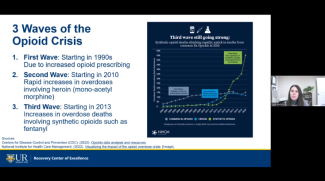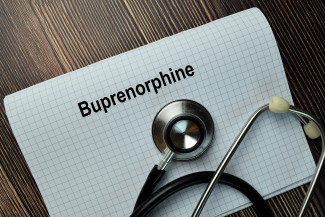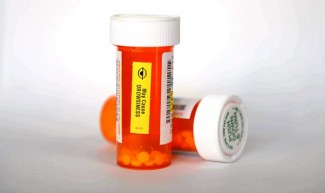Search
Implementation and workflow strategies for integrating digital therapeutics for alcohol use disorders into primary care: a qualitative study
Abstract
Background
Alcohol use disorders (AUD) are prevalent and often go untreated. Patients are commonly screened for AUD in primary care, but existing treatment programs are failing to meet demand. Digital therapeutics include novel...
Teacher attitudes toward evidence-based practices: Exploratory and confirmatory analyses of the school-adapted evidence-based practice attitude scale
Abstract
Background
The Evidence-Based Practice Attitudes Scale (EBPAS) is widely used in implementation research, but it has not been adapted and validated for use among general education teachers, who are most likely to deliver evidence...
Disruptions to U.S. local public health’s role in population-based substance use prevention and response during COVID-19
Background
COVID-19 dramatically limited the scale and scope of local health department (LHD) work, redirecting resources to the response. However, the need for essential public health services—including substance use prevention—was not...
Variations in national availability of waivered buprenorphine prescribers by racial and ethnic composition of zip codes
Background
Opioid overdose remains a public health crisis in diverse communities. Between 2019 and 2020, there was an almost 40% increase in drug fatalities primarily due to opioid analogues of both stimulants and opioids. Medications for...
Severe bacterial infections in people who inject drugs: The role of injection-related tissue damage
Abstract
Background
In the context of the current U.S. injection drug use epidemic, targeted public health harm reduction strategies have traditionally focused on overdose prevention and reducing transmission of blood-borne viral...
High-dose buprenorphine induction in the emergency department for treatment of opioid use disorder
In response to the rising efficacy of the illicit opioid drug supply and often observed delays in access to follow-up therapy, emergency departments (EDs) occasionally utilize a high-dose buprenorphine induction method for the treatment of...
High-dose buprenorphine induction in the emergency department for treatment of opioid use disorder
Abstract
Importance: Emergency departments (EDs) sporadically use a high-dose buprenorphine induction strategy for the treatment of opioid use disorder (OUD) in response to the increasing potency of the illicit opioid drug supply and...
An Integrative Review of Measuring Caregiver Burden in Substance Use Disorder
Abstract
Background: Family caregivers contribute to engagement in treatment and adherence, reduced substance misuse and relapse, and increased well-being of recipients with substance use disorder. However, providing care has also been...
A US national randomized study to guide how best to reduce stigma when describing drug‐related impairment in practice and policy
Tobacco Use Among Lesbian, Gay, Bisexual and Transgender Young Adults
It is recognised that smoking and use of tobacco products among lesbian, gay, bisexual, transgender and queer (LGBTQ) young adults is higher compared to their heterosexual and cisgender peers.
Although it is believed that within the LGBTQ...
Mindful Body Awareness Training as Part of Treatment for Substance Use Disorder
The Link between the Marketing of Opioid Products with Mortality from Opioid-Related Overdoses
Efficacy of Monthly Buprenorphine Injections for Opioid Use Disorders
Opioid use disorder is a chronic, relapsing disease and a global health burden. Treatment for OUD tends to involve a combination of medication and behavioural intervention. It is recognised that buprenorphine can alleviate opioid withdrawal...
Risk Factors for Neonatal Abstinence Syndrome
Recent studies carried out by researchers from Vanderbilt University and Johns Hopkins University have examined characteristics linked with the heightened risk NAS.
The researchers found that boys are more likely to receive a diagnosis of...
Risk Factors for Discontinuation of Treatment for Opioid Use Disorders
Opioid Use Disorder (OUD), and the associated risk of overdose and death, is becoming one of the most prevalent threats to health and social wellbeing in the United States. Medication, such as buprenorphine, is the gold standard treatment...
Tobacco Cessation Interventions and Smoke-Free Policies in Mental Health and Substance Abuse Treatment Facilities
Association between Receptivity to Tobacco Advertising and Progression to Tobacco Use in Youth and Young Adults
A study funded by the National Institute on Drug Abuse (NIDA) has found an association with young people being exposed to adverts for electronic cigarettes (e-cigarettes) and taking up smoking later in life.
The study followed 10 989...
A Randomized, Open Label Trial of Methadone Continuation versus Forced Withdrawal in a Combined US Prison and Jail: Findings at 12 Months Post-Release
Appropriate Use of Drug Testing in Clinical Addiction Medicine
Purpose
The purpose of the Appropriate Use of Drug Testing in Clinical Addiction Medicine is to provide guidance about the effective use of drug testing in the identification, diagnosis, treatment, and promotion of recovery for patients...
Share the Knowledge: ISSUP members can post in the Knowledge Share – Sign in or become a member




